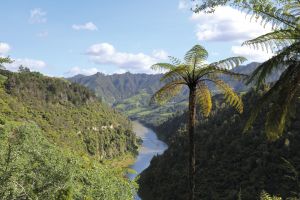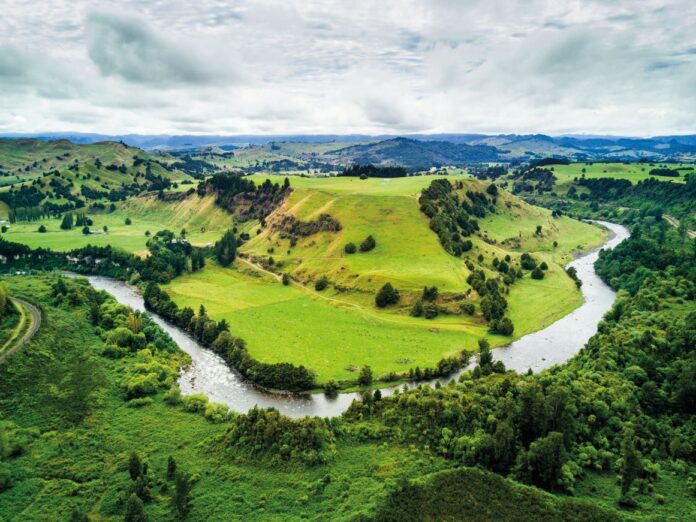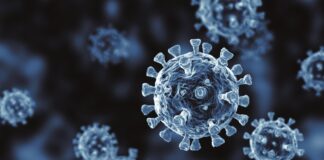New Zealand Aotearoa is hosting the 10th IWA-ASPIRE Conference in September. Gillian Blythe outlines how a uniquely New Zealand Aotearoa experience, blending modern science and te ao Māori, or Indigenous knowledge, is helping to restore and enhance waterways.
In an innovative departure from business as usual, the forthcoming edition of IWA’s Asia-Pacific regional conference, ASPIRE – taking place from 29 September to 3 October – is being held in tandem with the Water New Zealand Conference & Expo. The conference is aimed at forging connections to build a resilient future for communities worldwide.
Recognising the spirit of the water
In 2017, one of New Zealand Aotearoa’s most iconic rivers became a legal person in the eyes of the law. In a world first, this new legal status provided for the Whanganui River’s long-term protection and restoration. It also recognised the special ancestral relationship between river and the local Indigenous Māori tribe (iwi).
Water is regarded as a sacred life-giving essence by Māori, who often liken it to the blood of Papatūānuku (the Earth Mother). The legal identity provided for the long-term protection and restoration of the river by ensuring the rights, duties and liabilities of a person, and recognising the deep spiritual connection between the river and the local tribe.
For local iwi, the river is a literal, sentient ancestor who can be spoken and listened to. As such, damage to the watershed, such as pollution and the construction of hydropower dams, has cultural and spiritual implications, as well as environmental ones.
The whakatauki (saying or proverb) ‘Ko au te awa, ko te awa ko au’, ‘I am the river, the river is me’, reflects the intrinsic connectedness and metaphysical relationship between Whanganui iwi and their river. Māori believe that water is a living entity, with its own spirit, and that it is part of the wider environment.
The legal status was agreed to as part of the often-vexed treaty settlement process between the Crown and Māori, under the Treaty of Waitangi. In some settlements, agreement has been reached to share the management decisions over agreed natural resources such as rivers. This is part of a growing number of co-governance arrangements for the management of environmental resources, including waterways, between the Crown and Māori.
Waikato River agreement
Further north, a co-governance entity was set up between the Māori and the territorial local authorities over the management of Waikato River – the country’s longest river.
This settlement, again as part of a Treaty of Waitangi claim, provides for the entity to set the agenda for the health and wellbeing of the Waikato River for future generations. The Waikato is vitally important, not only to the people in the region, but for the country’s national economy through its hydro power and contribution to industry.
In this case, guardianship for maintaining the health of the river includes five tribes (iwi) along the length of the river and relevant territorial authorities. Again, this inter-connection between the river and the people was a pillar that supported the Crown/Iwi agreement.
Underpinning these co-governance arrangements is a uniquely New Zealand Aotearoa concept, te ao Māori (Māori world-view or way of life), and it is referred to as Te Mana o te Wai, which puts the health of the water first, because ‘ka ora te wai, ka ora te whenua, ka ora nga tangata’ – if the water is healthy, the land is healthy, the people are healthy.
Te Mana o te Wai draws heavily on the deep connection Māori people have with water, placing the health and wellbeing of freshwater as the top priority when managing water resources, essentially giving ‘mana’ (authority or respect) to the water itself.
It is rooted in Māori concepts of ‘mauri’ (life force) and ‘kaitiakitanga’ (guardianship), emphasising the responsibility to care for and protect water sources for future generations.
In recent years, this concept has become intrinsic in the management of our waterways, including providing local territorial authorities and councils with a direction on how they should manage freshwater through a national policy statement.
A recent change of government and a push from groups, particularly within the agricultural sector, has shifted the focus away from these concepts. However, for many local authorities, working with iwi on improving the health of water is embedded, and the success of working in partnership with local iwi through co-governance arrangements has been evident at community or grassroots level.

Kaipara Harbour restoration
One recent story that mirrors the success of small community-led projects under way in many corners of the country is situated in the far north, about an hour outside our biggest city, Tāmaki Makaurau Auckland.
There, the territorial authority, Auckland Council, iwi and local landowners, including farmers, have been working together to restore the health of one of the biggest inland harbours in the world, the Kaipara Harbour, which flows out to the Tasman Sea.
During the late 19th and early 20th centuries, massive amounts of kauri – a coniferous species of tree that formed the backdrop of the Kaipara harbour – were milled for ship building, house construction and furniture. The stripping of the ancient forests and consequent severe soil erosion, coupled with an upsurge in livestock and dairy farming, continues to clog the many rivers that flow through to the Kaipara Harbour. It’s estimated that around 700,000 tonnes of sediment and forestry slash are poured into the harbour each year. The sediment soup that has resulted in a myriad of complex environmental collapses include the depletion of aquatic plants and seagrasses because of a lack of light.
Seven years ago, local iwi closed the Kaipara to shellfish gathering. The harbour had also been an important breeding ground for snapper – a popular coastal fish. But now there are reports that much of the fish population has mutated, and locals have become increasingly concerned about so-called ‘zombie fish’, with changes including thickened gills, sunken eyes and wasted flesh.
As part of an ambitious project to restore the harbour, the Hōteo Sediment Reduction Project is focused on reducing the level of erosion, while also restoring biodiversity in the Hōteo River catchment and restoring the health of the harbour.
The Hōteo River meanders through hill country and farmland for approximately 28 km before reaching Kaipara Harbour. This project responded to the issues occurring in the natural environment through the internationally well-established GEMS (Geomorphically Effective Management Solutions) concept. GEMS are a toolbox of different mitigations, working with the natural processes of the waterway rather than trying to control it. GEMS trialled in the project include bank battering, log weirs, toe protection (using logs and well-placed rocks), grade control, and the more conventional practices of tree planting and fencing to keep stock out of the water.
But more exceptionally, in this project GEMS includes a uniquely New Zealand Aotearoa approach – partnership with local iwi. Using both western science and matauranga Māori (Māori Indigenous knowledge), the territorial authority, in this case the Auckland Council, has been working with local landowners and iwi to restore the health of the waterways.
Project members describe it as ‘living in two worlds’, drawing the best from both science and matauranga Māori. They point out that fluvial geomorphology, as with any ‘western science’ discipline, is unable to capture the deep, intricate and relational relationships that Māori have with their environment. Both models look at restoration from a holistic approach and understand how the wider system, such as land use, impacts the localised site being restored. Again, this links with te ao Māori – a river is not a collection of its measurable parts, but is an interconnected and living being.
To quote a recent conference presentation: “Through Māori eyes, rivers are generally seen as whole and indivisible entities, not separated into beds, banks and waters, nor into tidal and non-tidal, navigable and non-navigable parts. Through creation beliefs, the river is a living being, an ancestor with its own life force, authority and prestige, and sacredness.”
In the Hōteo project, incorporating Indigenous cultural and social outcomes hasn’t undermined the GEMS approach to solving the problem of fine-grained sediment. Instead, it allows for kaitiakitanga (guardianship and protection of the environment or resources) to be incorporated into everything.
The Hōteo river restoration project signifies a long-term relationship with iwi that will be firmly embedded over many years to come.
The author:
Gillian Blythe is Chief Executive of Water New Zealand
More information
For the latest details on the 10th IWA-ASPIRE Conference, 29 September to 3 October 2025, see: www.iwaaspire2025.org








